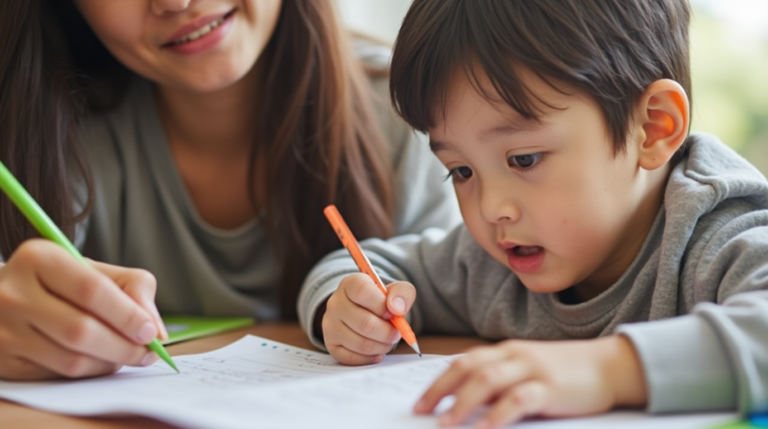The Power of Play: Why Unstructured Playtime is Essential for Kids
Table of Contents
The Power of Play: Why Unstructured Playtime is Essential for Kids
In today’s overscheduled world, children’s free time is often replaced with structured activities, screens, and academic drills. Yet, decades of research show that unstructured play—not directed by adults—is crucial for healthy development.
This article explores why child-led play matters, how it benefits growing minds, and practical ways to bring back this vital ingredient of childhood.
1. What Is Unstructured Play?
“Play is the work of childhood.” — Jean Piaget
Definition:
Unstructured play is open-ended, child-driven activity with no set rules or adult-imposed outcomes.
Examples:
- Building forts with blankets
- Pretend play with dolls or action figures
- Exploring nature without a planned agenda
- Creating art freely (no coloring books)
Structured vs. Unstructured Play Comparison
| Unstructured Play | Structured Play |
| Child-directed | Adult-directed |
| No fixed rules | Clear rules/goals |
| Open-ended outcomes | Defined outcomes |
| Develops creativity | Teaches specific skills |
2. The Science-Backed Benefits
Cognitive Development
- Improves problem-solving skills
- Boosts creativity and imagination
- Enhances focus and self-regulation
Emotional Growth
- Provides natural stress relief
- Teaches emotional resilience
- Allows processing of real-life experiences
Social Skills
- Develops negotiation and compromise
- Encourages empathy and perspective-taking
- Builds conflict-resolution skills
“In play, children learn how to learn.” — O. Fred Donaldson
3. Why Modern Kids Get Less Play
Barriers to Unstructured Play:
- Overscheduled after-school activities
- Increased screen time
- Safety concerns limiting outdoor play
- Academic pressure starting earlier
Shocking Stat:
A study found today’s children spend 8 fewer hours per week in free play compared to kids in the 1980s.
4. How to Encourage Unstructured Play
For Toddlers (1-3 years)
- Provide open-ended toys (blocks, stacking cups)
- Allow safe exploration (messy play is good!)
- Resist the urge to “show the right way”
For School-Age Kids (6-12 years)
- Protect free time in their schedule
- Create a “yes space” with loose parts (cardboard boxes, art supplies)
- Encourage outdoor adventures (bug hunting, stick forts)
For Teens
- Support creative hobbies (music, DIY projects)
- Allow hangout time with friends (minimize adult interference)
- Value process over product in activities
5. The Role of Risk in Play
Why “Risky” Play Matters:
✔ Builds confidence and risk assessment
✔ Develops physical competence
✔ Reduces future anxiety
Safe Ways to Incorporate Risk:
- Climbing trees (start low)
- Using real tools (with supervision)
- Exploring neighborhoods (age-appropriate boundaries)
“What looks like danger is often just development in disguise.”
6. Digital Age Challenges
Balancing Screens and Play:
- Set “tech-free” times daily
- Model offline play as adults
- Choose apps that stimulate creativity (not just consumption)
Conclusion
Unstructured play isn’t merely recreation—it’s hardwired into children’s biology as a critical driver of development. By protecting time for child-led play, providing simple materials, and resisting the urge to over-direct, we give kids the tools to become creative problem-solvers, emotionally intelligent individuals, and lifelong learners.
Key Takeaways:
✔ Unstructured play builds executive function skills critical for school success
✔ The decline of play correlates with rising childhood anxiety
✔ Even 15-30 minutes of daily free play makes a difference
✔ The adult’s role in play isn’t to lead, but to create the conditions where magic can happen
FAQ
Q: How much unstructured play do kids need daily?
A: Experts recommend at least 1 hour for young children, and regular opportunities for older kids.
Q: What if my child says they’re “bored”?
A: Boredom sparks creativity! Respond with: “What cool idea can you come up with?”
Q: Are playgrounds considered unstructured play?
A: Yes, if children choose how to use the equipment (e.g., inventing games vs. following preset rules).
Q: How can schools support unstructured play?
A: Through recess policies, loose-parts playgrounds, and project-based learning.
Final Thought:
“The opposite of play isn’t work—it’s depression.” — Stuart Brown
Would you like to add a section on specific play materials by age group or research citations? This framework balances science with practical parenting advice.







